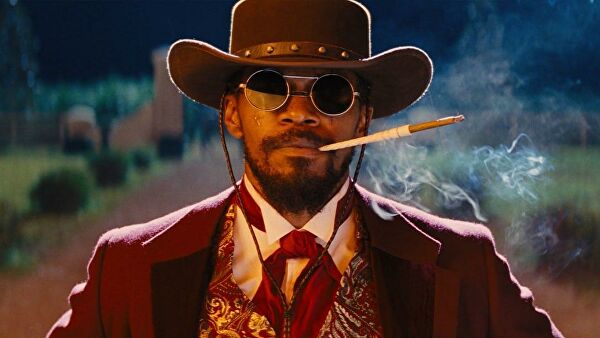About reactive and proactive management and what does snowboarding have to do with it…
A good manager – who are you?
One way or another, with varying frequency, the question arises: “Who is a good manager?” Now let’s try to abstract ourselves from some specifics, be it a project manager or the head of a team, department, or business. Let's just say that this is a certain manager who is responsible for a certain group of people, for the processes through which these people interact, for the activities, goals and results on which these people work.
Many will say that a manager’s quality indicator is the result of his team and department. Seems like a good indicator! But how to evaluate the contribution and work of the manager himself? After all, there are not rare cases when we were lucky, circumstances were favorable, or the team was strong and self-organized, and the best merit of the manager is that he did not interfere with their work. Or the opposite situation, when everything is bad, all possible force majeure happened, the team came out of this situation with negative indicators. But only with the competent and good work of the manager, the damage was minimal: he, like a captain in a storm, guided the ship through the reefs without sinking the ship on the first rock. However, the result is still negative.

I don’t have an obvious answer on how to understand the quality of a manager’s work. So if you are waiting for a “magic pill” in this article, then it will not appear further in the text. However, I came up with one very clear analogy. This is what I will share.
“Are you a skier or snowboarder?”
Remember (or imagine) your experience of learning to snowboard… or ski, or skate, or bike, or skateboard, or roller skate, or motorcycle, or paraglider… In general, any equipment which, for clarity of the example, implies movement in space.

Let's start learning to ride:
At the beginning, it’s generally not clear how to stand/sit/lie on it, what to pull, what to put pressure on, how to make IT move without falling.
So, we mastered the theory, figured out the basics and somehow got going. But every action and movement must be pronounced for yourself and accompanied by a glance.
The controls are mastered, you don’t have to look at them or look for where they are. However, the speed is still low and we only look at our feet.
We are already starting to accelerate, we are driving confidently. But the appearance of some kind of unevenness, hole, bump, or sudden obstacle is fraught with loss of control, so we scan the surface and the nearest trajectory with our eyes for such “surprises.”
We drive confidently, pick up speed, don’t pay attention to the controls at all, some standard emergency situations are handled automatically. If something is non-standard, freelance, then in any case we already have control skills and refined movements in order to do something very quickly, for example, stop sharply. Our gaze mainly looks into the future, looking for the best trajectories, but at the same time we manage to assess the operational situation around us.
Next comes training in advanced techniques. They are different for different projectiles, and for my metaphor there are enough stages.
The main aspect that distinguishes the stages from each other is where is our gaze directed?. And the higher our level of skating, the further and wider we look.
So what does management have to do with it?
Let's try to draw an analogy in management with each stage.
At the beginning, something like a “breaking” happens – the realization that now what is expected of you is not the result of some work done directly by you, but the result of other people whose work you organize.
You have mastered approaches, tools, management methodologies, but you apply and use them rather because the book says so or the speaker at the conference said so, without fully realizing the value of these actions either for yourself or for the team.
At this stage, we are already moving from training to full-time work. But here, most of your managerial efforts are spent on responding to some situations, on “putting out fires,” and even in completely normal conditions. The remaining patterns of the performer’s behavior are still triggered. This is the so-called reactive management. Unfortunately, many managers remain at this stage, consciously or unconsciously. After all, often the way a manager constantly solves problems, “puts out fires,” “saves the world,” sacrifices his time and health, is presented and perceived as an indicator of the manager’s effectiveness.
Those who leave the comfort zone of reactive management begin to look into the future, anticipate certain situations, and prepare for them in advance. The manager has the beginnings proactive management. Of course, some other extraordinary situations can unsettle and ruin all plans, so it is important to use the lessons learned for the future and not slide back into reactive management.
By gaining experience, getting your head around, learning lessons from your own or other people’s cases, increasing your “observation”, the share of proactivity grows and exceeds reactivity. Of course, we cannot completely abandon reactivity, but the general management style and mindset should be proactive.
Reactivity → Proactivity
Exactly, just as a snowboarder’s gaze rises from his feet into the distance as his level of skiing increases, so the manager’s focus of attention moves from “here and now” to perspective. And just like a snowboarder still assesses the situation next to him with his peripheral vision, the manager does not completely break away from the current operating system. The right balance for each situation is important. The ability to choose this balance correctly also speaks of the level of professionalism.

What is the conclusion from all this? For me, the professionalism of a manager is evidenced by his ability to act proactively. A professional is not the one who runs around chaotically with a fire extinguisher during a fire and shouts the loudest in public, but the one who has installed a fire extinguishing system in the event of a fire and insured the property.
You can increase proactivity in different ways: apply risk management approaches, collect data and metrics and analyze them (data-driven decision making), debrief your projects and colleagues, attend conferences and meetups with case analysis, read articles and literature , maintain a knowledge base, use AI and ML tools, relieve yourself and delegate routine, and a bunch of other very standard and banal, but useful things. But the most important thing is to change your mindset and tame the “performer” within yourself, give way to the manager!



